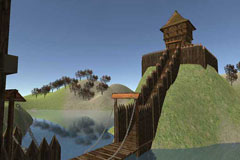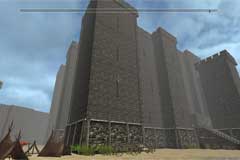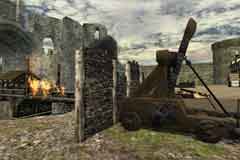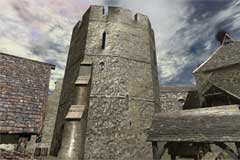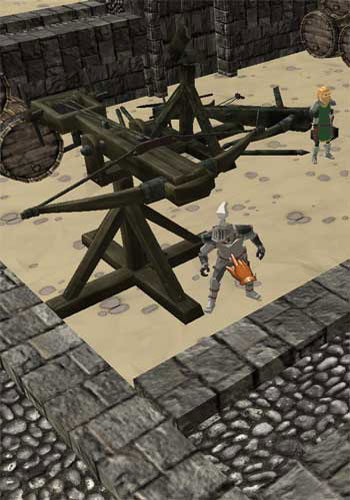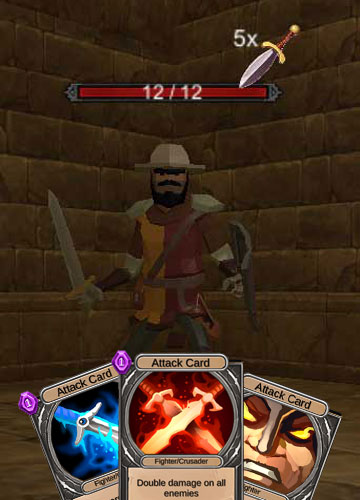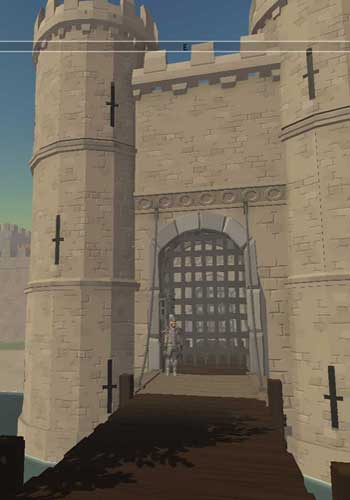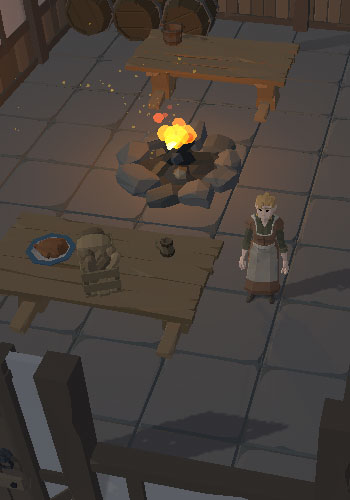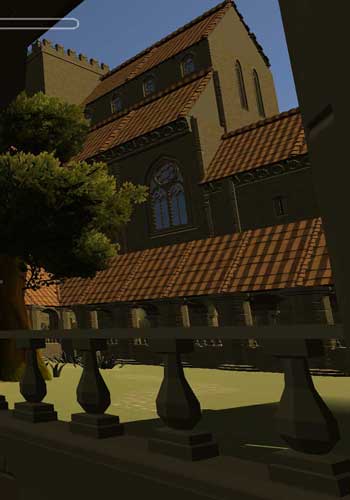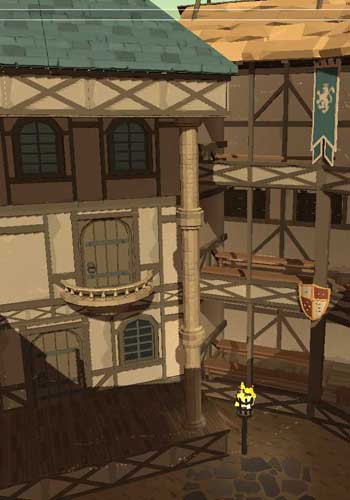Timeline
Birth of Richard Neville, the Kingmaker. Richard was the son of Richard Neville, 5th earl of Salisbury and Anne, the daughter of Thomas Montacute, 4th earl of Salisbury. [1]
Richard Neville married Anne Beauchamp who was the heiress to the Warwick Earldom. The last male Beauchamp had died without an heir and so Richard took the title of earl of Warwick. This gave him control of large amounts of land in the Midlands and South Wales.
A council was called and Edward, Earl of March and Richard Neville, Earl of Warwick were summoned to attend. Concerned that the reason they had been called was to be punished, the Yorkists decided to demand a meeting of their own with the King at St. Albans.
King Henry VI had by his side at St. Albans the Dukes of Somerset and Buckingham, Lords Pembroke, Northumberland and Devon and around 2,000 Lancastrian men. They tried to hold the town against the Yorkists led by Salisbury and Warwick but Warwick was able to enter the town through an unguarded spot and attack the flanks of the Lancastrian barricades. Although this battle was small it left the Duke of Somerset dead along with Lord Northumberland and Clifford. As a result of this victory power again swung to the Yorkists although support from the Barons was not total. Richard, Duke of York, again became Protector of the Realm and the powerful position of Captain of Calais was given to the Earl of Warwick.
England's naval power was weak and the waters between France and England were filled with pirates. Sandwich had been attacked by the French the year before. To put an end to this problem, the Earl of Warwick, the Captain of Calais, commanded a fleet of ships to patrol the English Channel. His fleet attacked and captured Spanish and Genoese ships talking prisoners and treasure. This made the Earl popular with the sailors under his command and the traders who the pirates had previously attacked. [1]
The Earl of Warwick arrived in England from Calais. He was welcomed in London before setting off north to meet up with the Duke of York. [2]
The Earl of Warwick with a force from Calais reached Ludlow and the combined army of the Yorkists attacked the King's army at Ludford Bridge near Ludlow. The men from Calais refused to fight their king and a weak Yorkist army was defeated. Richard Duke of York and his younger son escaped and fled to Ireland while Salisbury, Warwick and Edward of March (later Edward IV) fled to Calais.
The Lancastrians were building a large fleet of ships at Sandwich on the south coast and with it they planned to attack Calais. The Earl of Warwick became aware of this and arranged a raid led by John Dinham to steal the ships. Early in the morning of the fifteenth of January the Yorkists supporters attacked the dockyard and stole those ships that were seaworthy. Richard Woodville (Earl Rivers), his wife Jacquetta and their son Anthony were captured. [3]
With the Yorkists in control of the seas around the south coast of England, the Earl of Warwick was able to leave Calais and sail to Ireland where the Duke of York had taken refuge. There they planned their invasion of England and the defeat of the Lancastrians. [3]
With plans of invasion made the Earl of Warwick sailed back to Calais to organise his army.
Yorkists from Calais landed on the south coast of England and quickly seized Sandwich. They prepared for the arrival of the Earl of Warwick and the Earl of March.
Once the Yorkist army had secured Sandwich the Earls of March and Warwick arrived from Calais. They had a force of around 2,000 and the support of the Kentish men.
Accompanied by a large army of Yorkist supporters, the Earl of Warwick and Edward, the Earl of March left London and marched towards Northampton where the King was staying. [1]
The Lancastrians's Court was in Coventry at the time of the Yorkist rebels entering London. When news reached them, the Lancastrians moved south to Northampton to meet the rebels. The Yorkists led by the Earl of Warwick wanted to talk but the Lancastrians led by the Duke of Buckingham wanted to fight. Although the Lancastrians had less men than the Yorkists, they did have control of a stronger position. The Yorkists managed to defeat the Lancastrians due to a section of the Lancastrian army led by Lord Grey of Ruthin moving away allowing the Yorkists through. Orders were given that the King and ordinary men should be spared, while the knights and lords should be killed. When the fighting was over the casualties were light, but the Lancastrian leaders, Buckingham, Shrewsbury and Egremont were dead and the King was captured.
The Lancastrians army led by the Queen met the Yorkist army led by Warwick at St. Albans. The Yorkist army was split in two and during the battle sections of the Yorkists defected to the Queen's side. The Yorkists were defeated and Warwick escaped. The King, who had been travelling with the Yorkists, was freed and he was reunited with his wife and son.
Edward and Warwick were allowed to enter the city of London. The citizens of London had refused to let the Queen enter and so she returned north with the King.
The Battle of Towton was the bloodiest battle of the Wars of the Roses and was fought in a snowstorm at Towton in Yorkshire. Both the Lancastrian and Yorkist armies were large having possibly 40,000 men each. The battle lasted many hours until the Lancastrians's line was broken. Fleeing into a river many of the Lancastrians were drowned due to their heavy armour and the rest were killed by the pursuing Yorkists.
The Earl of Warwick was put in charge of capturing the castles from the Lancastrian garrisons. Edward had to stay at Durham to recover from a bout of the measles. The castles were not attacked but cut off from supplies to starve the soldiers out. Just before the new year the Lancastrian soldiers surrendered and the Yorkists took control of Bamburgh and Dunstanburgh Castles. Warwick used the castle at Warkworth as his base while he monitored the sieges at the other castles. The seige of Alnwick Castle continued into January. [2]
Sir Ralph Percy, the constable in charge of Bamburgh and Dunstanburgh castles, defected and allowed the Lancastrians to take control. Alnwick Castle fell to the Lancastrians shortly afterwards.
Warwick took an army north to deal with the new threat from Queen Margaret. The Lancastrians had laid siege to Norham Castle on the Scottish border. Under the control of the Earl of Warwick, the Yorkists again proved too powerful for the Lancastrians and with her invasion plans in ruin Margaret decided to return to France. She took Prince Edward with her. [4]
Queen Margaret and King Henry VI with Scottish support besieged the castle at Norham. King Edward failed to react to the problem and it was left to the Earls of Warwick and Northumberland to come to the castle's rescue. King Henry, Margaret and the Scots fled.
King Edward IV married Elizabeth Woodville (Wydville) secretly during a hunting trip. The hunting trip that may have been arranged as a cover. Edward is supposed to have had a reputation as a lady's man and had many lovers. To Edward, Elizabeth could have been just another lover, but Elizabeth may have wanted more and persuaded Edward to marry her. The marriage took place in secret and was kept quiet until the spring of 1465. One problem with the marriage was that Elizabeth was the widow of Henry V's brother John, a Lancastrian and her family were Lancastrian supporters. The other problem was that Warwick had contacted the French king Louis XI and had been trying to arrange a marriage for Edward to a French princess. Edward's act upset Warwick's plans.
The Nevilles defeated the last of the Lancastrian forces near Hexham and executed the rebels including Henry Beaufort the Duke of Somerset. In recognition of their contribution to the security of his reign Edward IV gave John Neville, Lord Montague, the title of Earl of Northumberland and George Neville became the Archbishop of York.
After the Lancastrians were defeated at the Battle of Hexham their power in Northumberland was at an end. The Earl of Warwick accepted the surrender of Alnwick Castle on June the 23rd. Dunstanburgh Castle surrendered shortly afterwards. The siege at Bamburgh Castle was brought to an end with the use of cannons, the first castle to fall in such a way. [2]
Edward arranged for his sister Margaret to marry Charles the Duke of Burgundy. Burgundy had for some time been a supporter of the Yorkists and this marriage strengthened the bond. For Warwick, this was a disaster. Warwick had been attempting to make an alliance with France and that was not about to happen.
Warwick was unhappy with the marriage of Edward and Elizabeth Woodville and he began to plan how overthrow the king. Warwick's plans centred around Edward's brother George, the Duke of Clarence. If George was to marry Warwick's daughter Isabel and become king, Warwick would be back in a position of power.
A rebellion began early in the year started by a mysterious person calling himself Robin of Redesdale. The motivation for the uprising against the king was his marriage to Elizabeth Woodville and the influence the Woodvilles were having. The rebels were supported by the Earl of Warwick.
Warwick and the Duke of Clarence travelled to France where Clarence was married to Warwick's fifteen year old daughter Isabel. The ceremony was conducted by Warwick's brother George Neville the Archbishop of York.
Richard Neville, the Earl of Warwick returned from France to England with an army, passing through Canterbury and London. His plan was to take the army north and join up with the Rebels led by Robin of Redesdale.
Edward's army was insufficient to deal with the rebels alone and he had moved them to Nottingham to wait for a larger army to join them led by Sir William Herbert, the Earl of Pembroke. Pembroke's army was attacked and defeated by a combined rebel army led by Robin of Redesdale and the Earl of Warwick who had returned from France. The battle took place at Edgecote near Banbury. Sir William Herbert and his brother Richard were captured and executed.
After the defeat of William Herbert at Edgecote, Edward was left without a strong enough army to deal with the Earl of Warwick. Either Edward's army deserted him, or he dispersed his army on purpose, but the outcome was the same; Edward was captured and taken to Middleham Castle as a prisoner.
While Edward was imprisoned, Warwick captured the Queen's father (Earl Rivers) and one of her brothers and had them executed at Warwick Castle.
With the king in custody there began a series of riots around the country protesting against the Earl of Warwick. Warwick did not have the backing of Parliament and in the end had little choice but to let Edward go free and return to rule the country.
A rebellion had begun in Lincolnshire early in the year and had been mostly been dealt with by Edward, but Sir Robert (Welles ?) had escaped capture and was still on the run. Edward finally caught up with Sir Robert near Stamford in Lincolnshire. In the battle known as Empingham (or Lose-Coat), Sir Robert was captured and confessed that the rebellion had been master-minded by the Earl of Warwick and the Duke of Clarence.
After their treachery had been uncovered, the Earl of Warwick and Duke of Clarence fled to France. Warwick's plan was to get help from the French King. They took a ship with their immediate relatives and followers from either Exeter or Dartmouth. Isabella, Warwick's daughter, gave birth on the ship to a son, but he died shortly afterwards. When they reached Calais, the deputy-governor, John Lord Wenlock, refused them entry to the harbour and fired his guns at them. [5]
Louis XI, the French King devised a plan to remove Edward IV from the English throne. Louis persuaded the Yorkist Earl of Warwick and Margaret of Anjou the exiled wife of Henry VI, a Lancastrian, to combine forces and attempt to over through Edward. Warwick and Margaret met on 22 July at Anger Cathedral to put their differences aside and to agree on a course of action.
The betrothal of Prince Edward and Anne Neville formed part of the agreement between Queen Margaret and the Kingmaker to put King Henry VI back on the English throne. The act taking place at the Cathedral of Angers, [4]
The Earl of Warwick promised to restore Henry VI to the English throne, and he betrothed his youngest daughter Anne to Margaret's son Edward, the Prince of Wales.
With an army and over fifty ships provided by King Louis, the Earl of Warwick set sail from France to England. [6]
The Earl of Warwick landed at Dartmouth in Devon accompanied by the Lancastrian Earl of Oxford and Jasper Tudor, the half-brother of Henry VI. Edward was in the north at the time of Warwick's return and was turned upon by John Neville, Warwick's brother. Although John Neville had accepted Edward as King, Edward had removed John's title of Earl of Northumberland earlier in the year and given it to the Percys. John Neville advanced on Edward's position with a force much larger. [5]
The Earl of Warwick and Clarence entered London. King Henry VI was released from the Tower of London. Henry was crowned King of England for the second time.
The marriage between Edward of Lancaster, the son of Henry VI and Margaret of Anjou, to Anne Neville, the daughter of Richard Neville the Kingmaker was a marriage to cement the agreement that Richard and Margaret would support each other and try to get Henry VI back on the English throne. The marriage took place in France at the Chateau d'Amboise where Margaret and Edward were exiled.
George, Duke of Clarence deserted the Earl of Warwick and joined his brothers Edward and Richard. Importantly for the Yorkist cause, he brought with him a sizable army. [5]
The Earl of Warwick was in Coventry and apparently unwilling to confront Edward, so Edward and Richard marched south to London. London was under the control of Warwick's brother, George Neville the Archbishop of York, but the Londoners were Yorkists and they welcomed the return of their true king. Once inside the city Edward had the Archbishop arrested and along with King Henry VI put in the Tower of London.
The Earl of Warwick had left Coventry to confront Edward. The armies met at Barnet just north of London in thick fog. The two battle lines overlapped and Warwick's Lancastrian men commanded by the Earl of Oxford were able to get around the Yorkists commanded by Lord Hastings. Hastings' men fled back to London with Oxford's men in hot pursuit. On the other side of the battle the Yorkists, led by Richard, were outflanking the Lancastrians and took the advantage pushing their enemy back. When Oxford's men returned to the battle they were mistakenly fired upon by their fellow Lancastrians and fled. By early evening Lord Montague and the Earl of Warwick were dead. The Lancastrians were defeated.
Selection of references used:
- 1: C. W. Oman, Warwick
- 2: Anthony Goodman, The Wars of the Roses, ISBN:0-88029-484-1
- 3: John Gillingham, The Wars of the Roses, ISBN:ISBN-0-297-82016-8
- 4: Paul Murray Kendall, Richard The Third, ISBN:ISBN-0-04-942048-8
- 5: Anthony Cheetham, Life and times of Richard III, ISBN:0-297-83167-4, Weidenfield and Nicolson
- 6: Hubert Cole, The Wars of the Roses, 1973, ISBN:0-246-10618-2, Own copy

